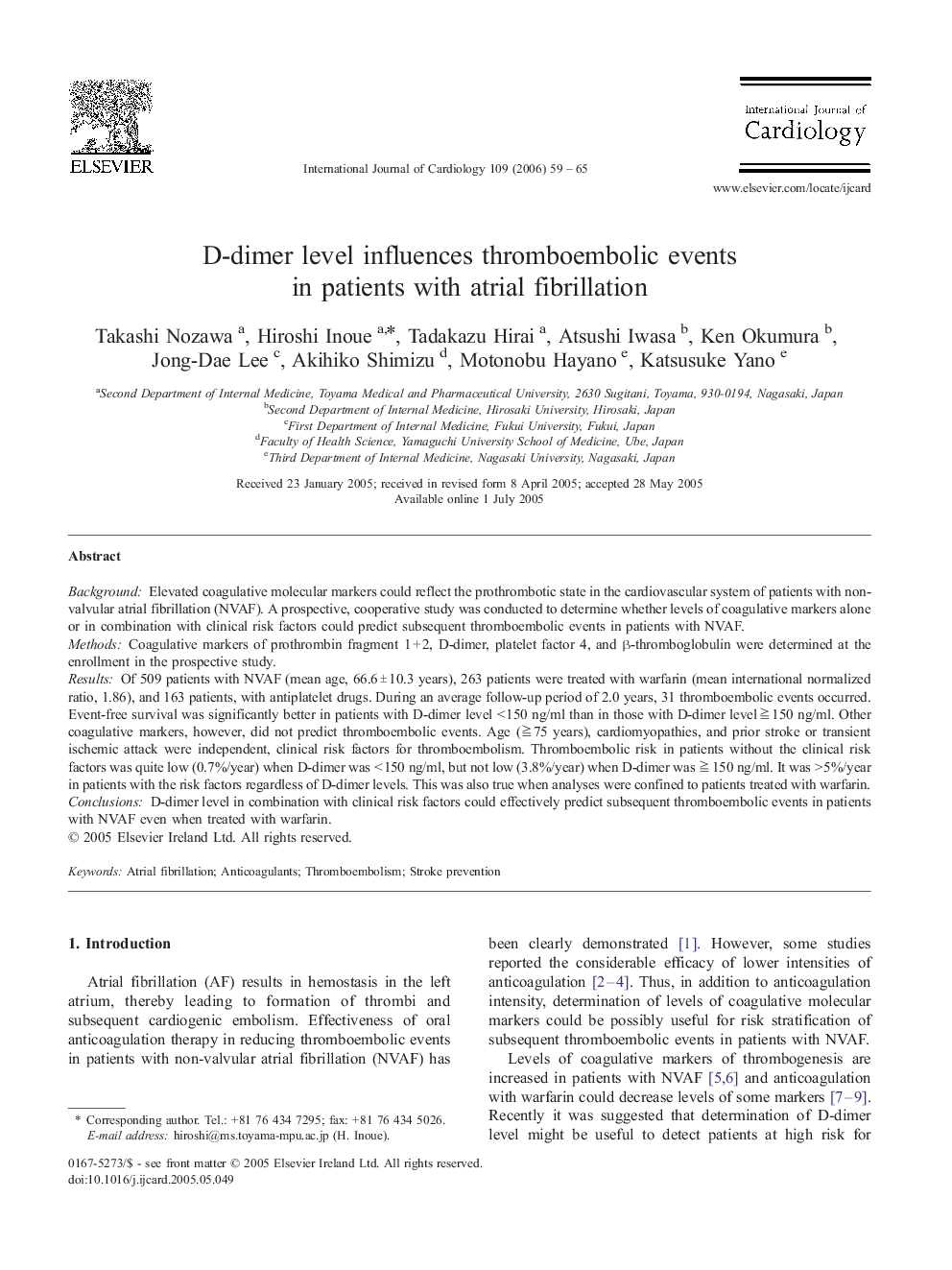| Article ID | Journal | Published Year | Pages | File Type |
|---|---|---|---|---|
| 2937011 | International Journal of Cardiology | 2006 | 7 Pages |
BackgroundElevated coagulative molecular markers could reflect the prothrombotic state in the cardiovascular system of patients with non-valvular atrial fibrillation (NVAF). A prospective, cooperative study was conducted to determine whether levels of coagulative markers alone or in combination with clinical risk factors could predict subsequent thromboembolic events in patients with NVAF.MethodsCoagulative markers of prothrombin fragment 1 + 2, D-dimer, platelet factor 4, and β-thromboglobulin were determined at the enrollment in the prospective study.ResultsOf 509 patients with NVAF (mean age, 66.6 ± 10.3 years), 263 patients were treated with warfarin (mean international normalized ratio, 1.86), and 163 patients, with antiplatelet drugs. During an average follow-up period of 2.0 years, 31 thromboembolic events occurred. Event-free survival was significantly better in patients with D-dimer level < 150 ng/ml than in those with D-dimer level ≧ 150 ng/ml. Other coagulative markers, however, did not predict thromboembolic events. Age (≧ 75 years), cardiomyopathies, and prior stroke or transient ischemic attack were independent, clinical risk factors for thromboembolism. Thromboembolic risk in patients without the clinical risk factors was quite low (0.7%/year) when D-dimer was < 150 ng/ml, but not low (3.8%/year) when D-dimer was ≧ 150 ng/ml. It was > 5%/year in patients with the risk factors regardless of D-dimer levels. This was also true when analyses were confined to patients treated with warfarin.ConclusionsD-dimer level in combination with clinical risk factors could effectively predict subsequent thromboembolic events in patients with NVAF even when treated with warfarin.
